"According to the latest data, 15 people are dead {new data indicates that there are more than 20 people dead}. Three bodies have been retrieved," Deputy Mayor Pyotr Biryukov told journalists. He added 12 bodies remain stuck in the damaged train.
Media reports have emerged of 16 people being dead. Those have not yet been officially confirmed.
The driver of the derailed train, who was earlier reported dead, is actually alive and being treated in hospital, Moscow authorities say, according to RIA Novosti.
The accident happened during the morning rush hour when the train was packed with passengers.
The first carriage of the train sustained most of the damage, according to an eyewitness of the accident who spoke to RT. Ivan, said he was in the second car when the train suddenly braked and the lights went off.
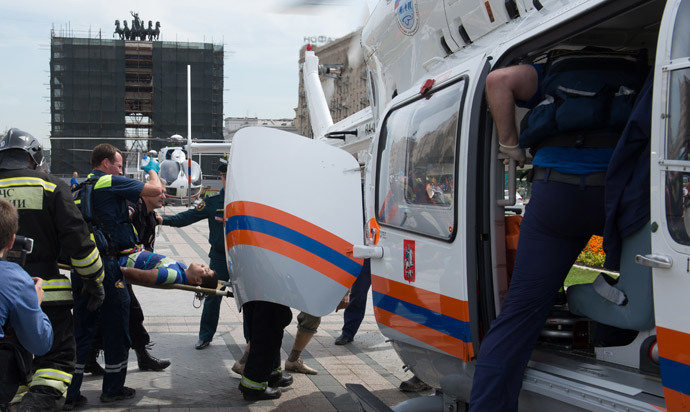
Ivan also says after the train derailed there was a flash and then the tunnel was filled with thick smoke.
"The car was badly damaged. We started to get out. We saw a door in the tunnel's wall. Men eventually broke that door and we saw workers, constructing a parallel tunnel. They helped us to get out."
An eyewitness, who spoke to LifeNews, was in the fifth carriage and says they had to wait for 30 minutes before the evacuation started.
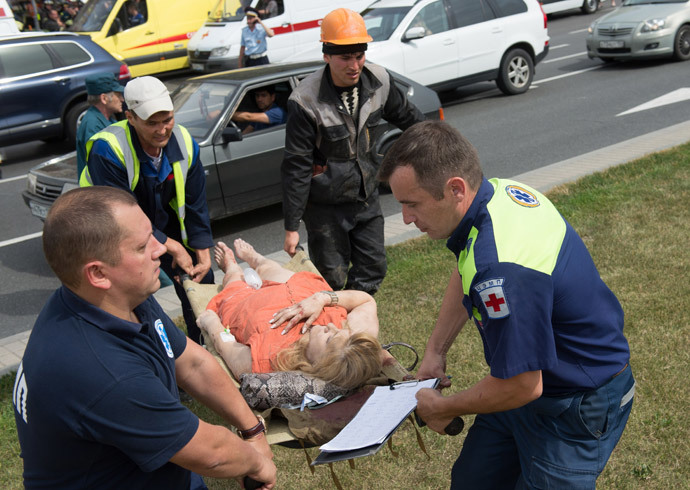
Andrey Zenin, another survivor in the accident, says he helped extinguish the fire in one of the carriages and he also was among the volunteers who helped to get the injured out of the tunnel.
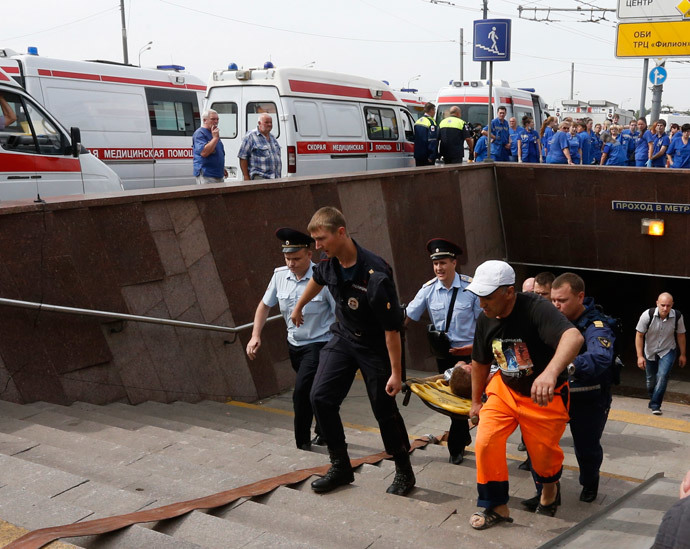
Law enforcement officials told that three train cars had derailed, "but not overturned."
Prime Minister Dmitry Medvedev has expressed condolences to the families of the dead and promised that the federal government will help in the post-accident clean-up.
Moscow authorities do not consider the cause the accident in the Metro could have been a terrorist act, according to Maksim Liskutov, the head of the transport department in the Moscow government, cited by Dozhd TV channel.
Moscow Mayor Sergey Sobyanin has promised to take tough measures against those responsible for the accident after visiting the crash site.
"I'm sure a criminal case should be launched into the accident, an investigation conducted and the toughest measures taken," Sobyanin told journalists, after he visited a hospital where the injured had been taken.
Some passengers could still be at the site of the accident, according to Maksim Liskutov, Moscow's deputy mayor.
Attempts are being made to try and evacuate the stricken passengers, who are stuck in a tunnel between Park Pobedy and Slavyansky Bulvar stations, in the west of Moscow.
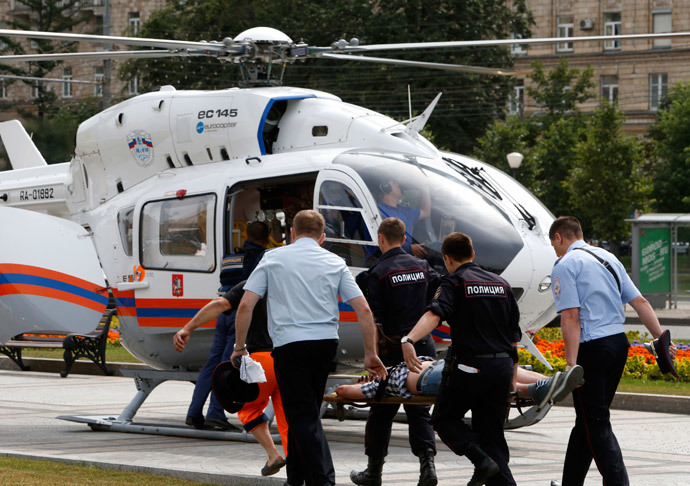
A failure in the power supply led to a false alarm going off. The alarm was a signal to the train driver to immediately stop the train. The sudden braking led to the derailment of several carriages.
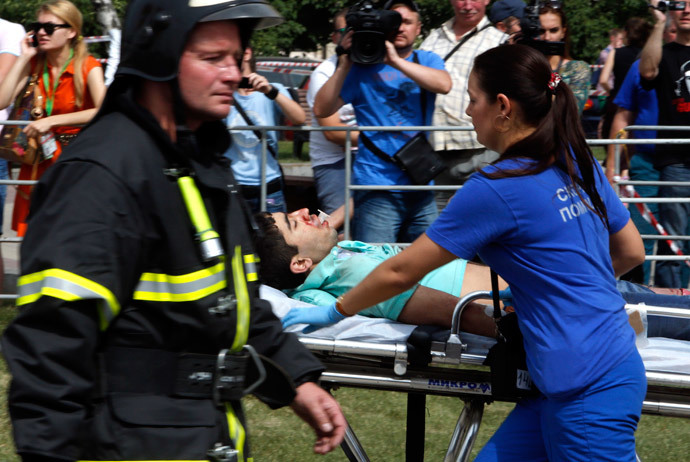
"At 8:39am Moscow time [04:39 GMT] on a stretch between stations of Park Pobedy [Victory Park] and Slavyansky Bulvar there was abrupt deceleration of a train," Moscow emergencies agency 's press service employee told RT.
Sixty-six buses, 40 ambulances and eight helicopters have been deployed by rescuers for evacuations.
The Investigative Committee (IC) has launched a criminal case over 'violation of transportation security demands', according to interim head of the Moscow's Western District Department of the IC, Roman Syomushkin.
The Moscow Metro, with its 194 stations and a route length of 325.4 km (202.2 miles) is one of the world's busiest, carrying up to 9 million passenger trips each workday.
The Arbatsko-Pokrovskaya, or dark blue line, where the accident happened, is the longest and possesses the deepest section in the Moscow Metro, at 74 meters (243ft) deep near the Park Pobedy station.
As of 2011, the blue line carried 733,000 people daily, but has since been extended westwards, with several new stations opening.
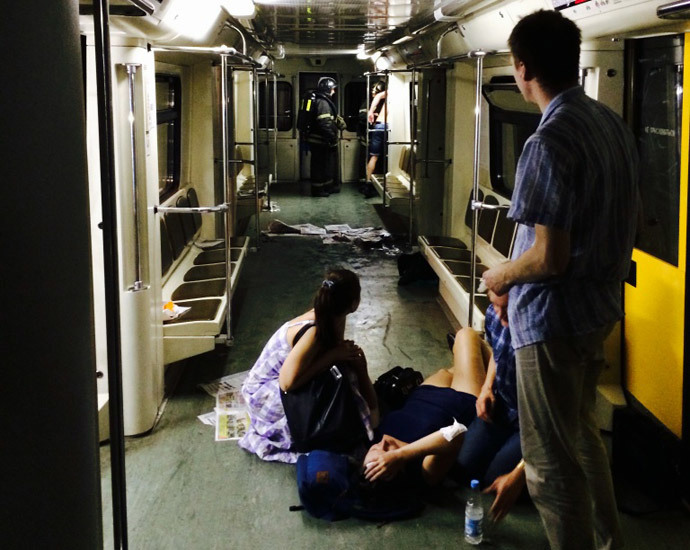
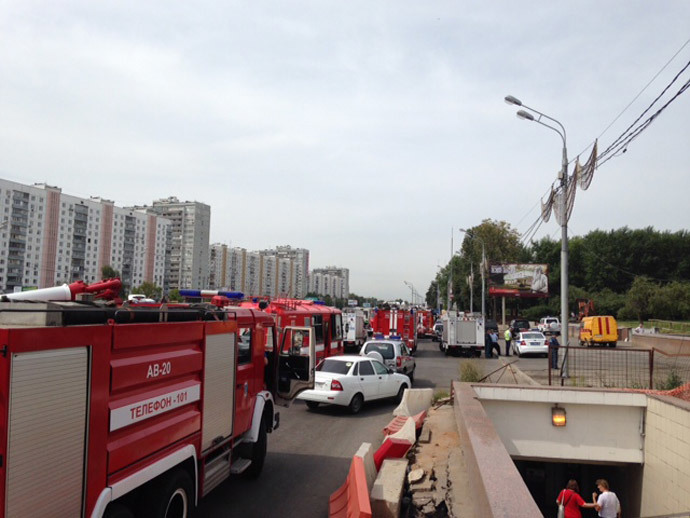
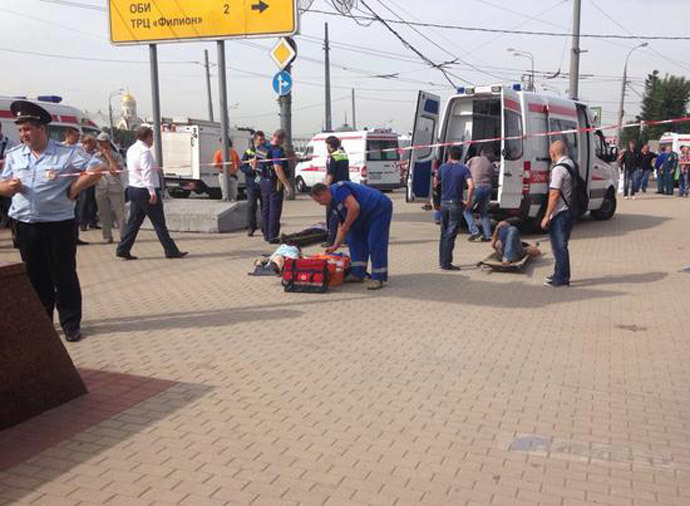




I still think it could be sabotage. They say otherwise not to cause public upheaval.